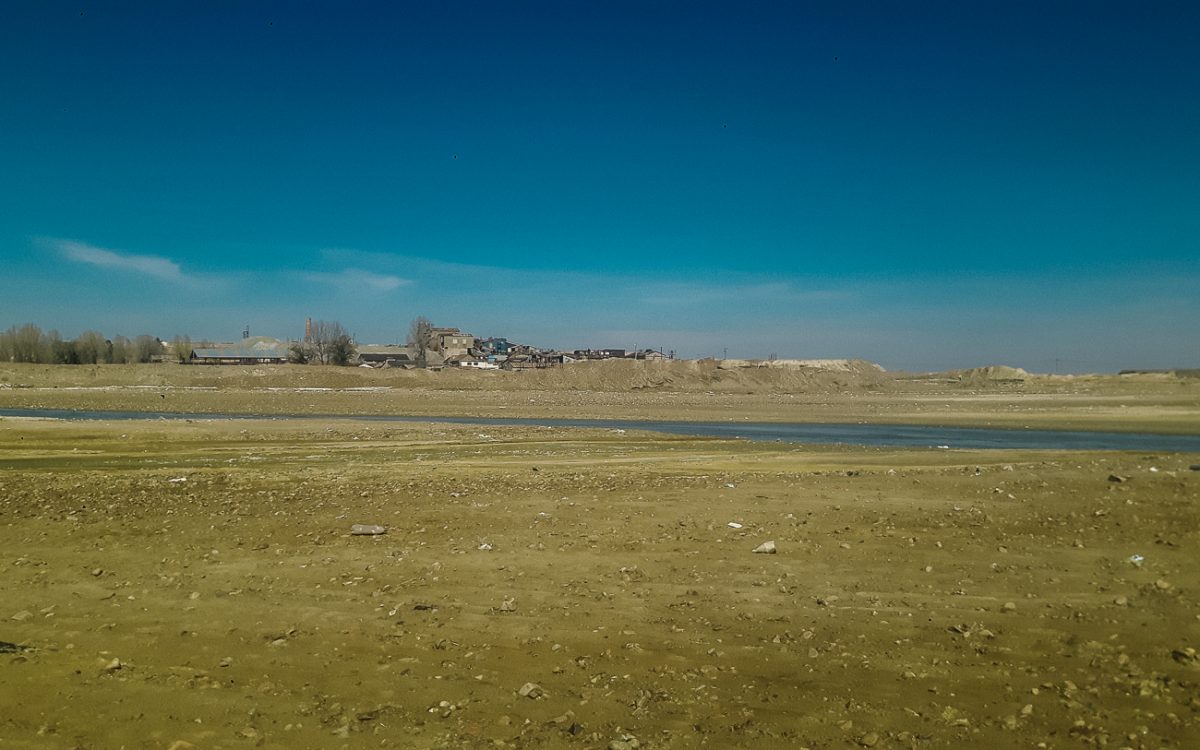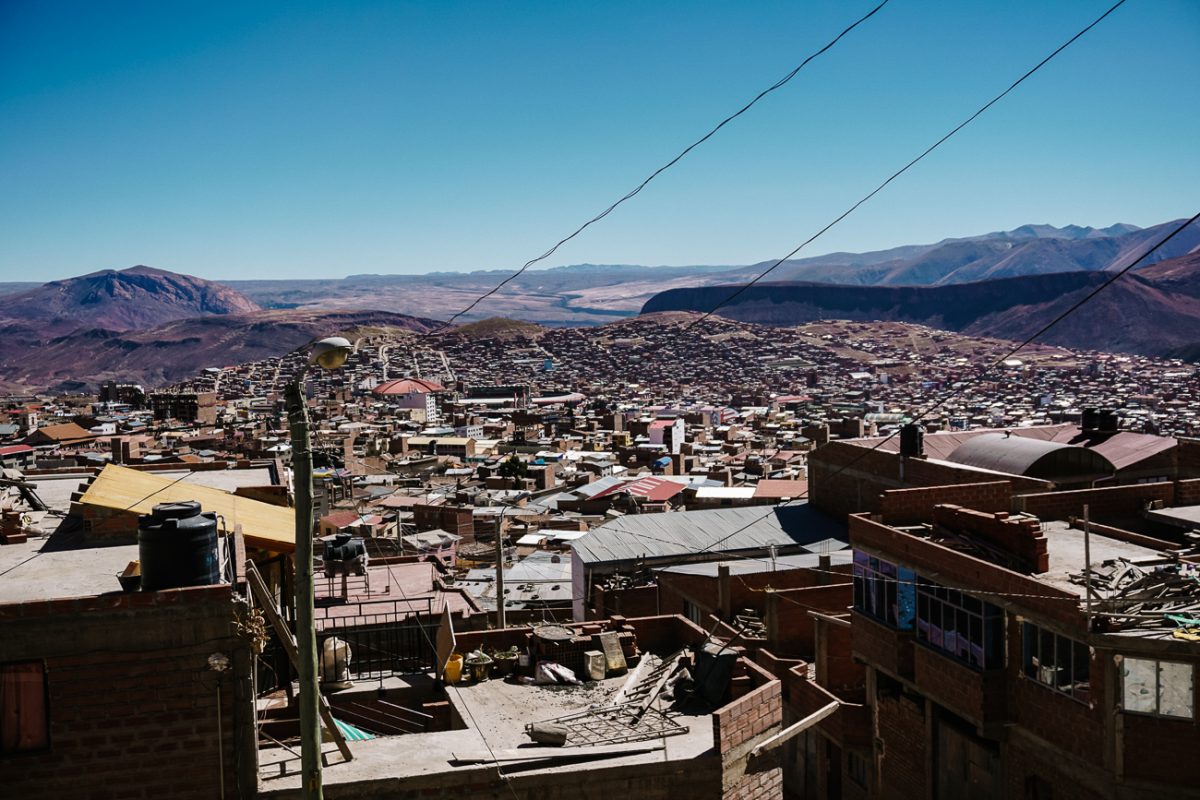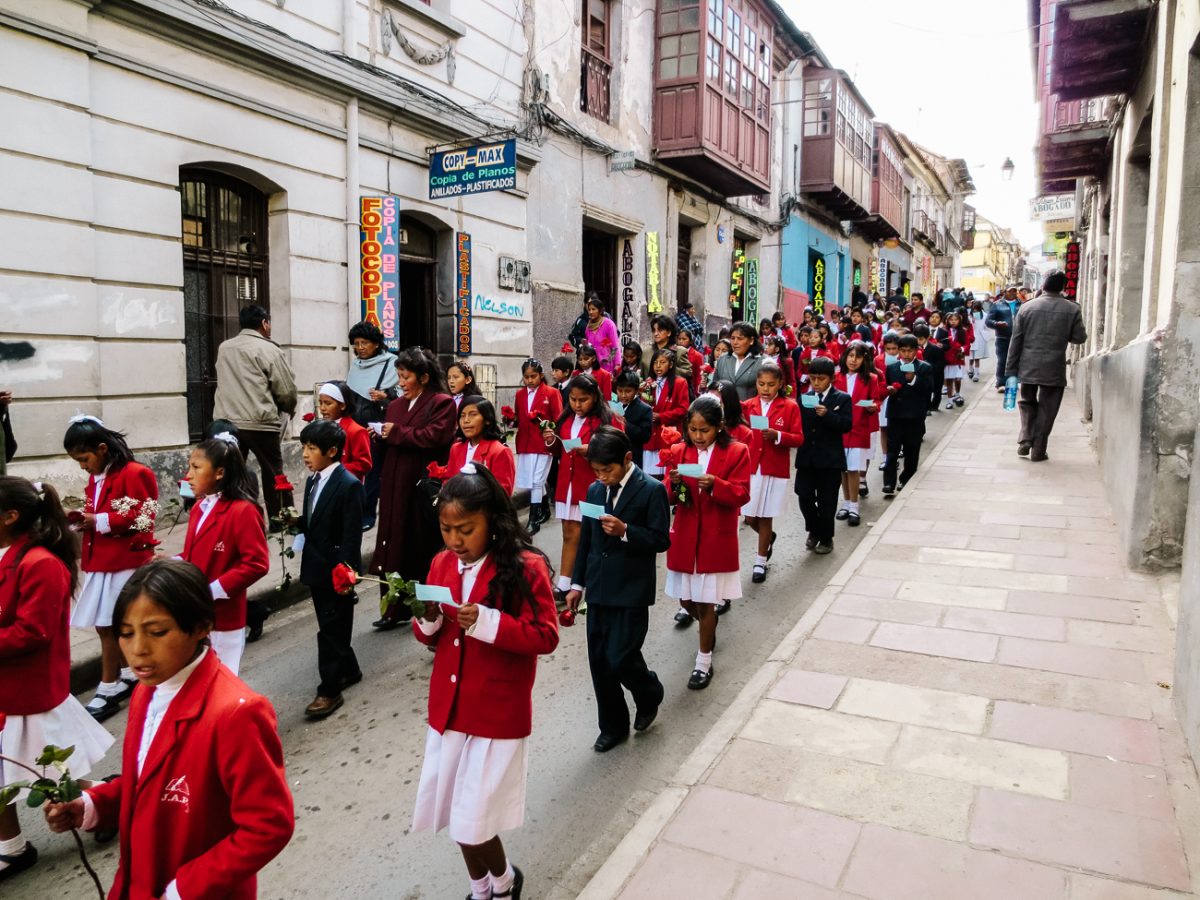Potosí is the highest city in the world, located at an altitude of 4067m. Potosí is a city that once belonged to one of the richest cities in Latin America, because of its flourishing mining industry. Nowadays it is a city that is struggling to survive economically. The streets and colonial buildings of the city tell a story of a tragic history. The low temperatures and altitude can make your stay intense. But at the same time, the city center has a “pleasant” atmosphere and people are friendly. A visit to this city should really not be missed! To dive into the history of this once bustling mining town. But also to explore the streets, markets, mines and to mingle with the locals. In this article I’m taking you on a journey to the highest city in the world: Potosí!
Potosí is the highest city in the world, at an altitude of 4067m, surrounded by the Cerro Rico mountains. And used to be one of the richest and largest cities in South America. In the 16th century, the Spaniards discovered large amounts of silver in the Cerro Rico mountains and started to exploit these mines on a large scale.
The indigenous population was put to work to be able to exploit all the silver and send to Spain. Because of the altitude it was only possible for the indigenous people to do this kind of heavy work. The city attracted people from all over the world because of employment possibilities. The city became richer and richer and the most beautiful churches, convents and buildings were created. At the same time, the working conditions in the mines were horrible and millions of people died. When the mines were exhausted in the early 19th century, the city was left empty behind, including a lot of poverty. Potosí changed completely!

Today we travel from Sucre to Potosí, a journey of approximately 4 to 5 hours. After two hours, we end up in a traffic jam. It appears to be a demonstration at a village. Without gong into discussion with the local people, we decide to go cross-country. Just like the other drivers, as this is very common in Bolivia. We arrive at a spot where we need to cross a river. “If that bus can do it, we can make it as well”, according to our driver. Who am I to contradict a real Bolivian driver? And yes, the first bus succeeds. We drive down as well, but unfortunately our bus is too heavy and we sink deep into the sand. We all need to get off. No matter how calm I’m trying to stay, we are in the middle-of-nowhere and this is a serious situation.


After a while, there is a tractor appearing in the distance and apparently coming our way. Is he here by chance or has he seen us? It doesn’t matter, he is willing to help. At first, it is completely unclear to me what he is doing. But after a while I start to understand that he is digging out the sand and trying to build a kind of road construction so we can drive up. There is no way, we would have ever come out of this way ourselves. Being back on track, it doesn’t take long before we need to stop again. This time it’s another local bus getting stuck. Everyone gets out and a new structure is built to guide the bus over. It’s incredible to see how everyone is helping each other all the time!


We have been delayed by two hours, but we are approaching Potosí. At the city gate, we get off to get used to the altitude and make some shots of the city, the Cerro Rico (in English: the rich mountains) and its mines. I’m still not sure what to think of this view. The intense blue sky is beautiful, but the chaotic city and the dusty sand-colored mountains give a different feeling. At least they make me realize that I am in a real Bolivian mining town.


Altitude sickness in the highest city in the world Potosí is very common. Upon arrival at the hotel, most people can rest to get used to the altitude, except for me. As we are on tight schedule, everything needs to be scheduled and arranged very well. As soon as I finish the check-in, I have to run into meetings, check on locations and meet people.

Even though I have been to heights countless times, I am always confronted with it during the first few days. Going for a walk and making a phone call at the same time, is simply not possible. You will be completely out of breath. Running or doing two things at the same time are things your body simply cannot handle. I have to force myself to take it easy, to keep breathing slowly and drink lots of water. Usually at the end of the day I have a terrible headache, a strange oppressive feeling that is different from all other headaches. But I am grateful if this is the case and it stays with that. Altitude sickness is a strange thing and unfortunately there is no way of really avoiding it.
I love the chaos and the Bolivian street life. As soon as I can, I go out for a walk and become part of the city. It is a bustling city. Countless things are sold and arranged in the streets, people eat, sit and hang around squares, table tennis is played and people live their lives just like in any other city.






Along the way I come across a large parade of children walking, singing and drumming their way though the streets. There is always a demonstration or parade in Potosí. When I ask what it is for, oh that school has been in existence for 25 years and that is being celebrated in a big way!


Check out Café de La Plata on the plaza. It looks a bit like a Grand Café, but more basic. It is a nice place for lunch, coffee, tea or cake! I always spend a lot of time here making phone-calls and working my computer.
Are you interested in learning more about the mines Potosí? Read the article a visit to the mines of Potosí!
Do you want to read more about Bolivia? In this article you’ll find an overview with what to do in Bolivia, including the most beautiful destinations. Also, have a look in the Bolivia library with many articles about this beautiful country. Such as the best things to do in Sucre, a city guide for Copacabana, a tour on the Bolivian salt flats, the Bolivian Inca trail, a visit to the Potosí mines, a tour to the Tiwanaku ruins, shopping in La Paz, how to use the cable car in La Paz but also information about safety.
This article may contain affiliate links. If you purchase something using one of our links, we may receive a commission at no extra cost to you, which helps us keep this blog alive. Thank you for your support! Please see our disclosures for more information.